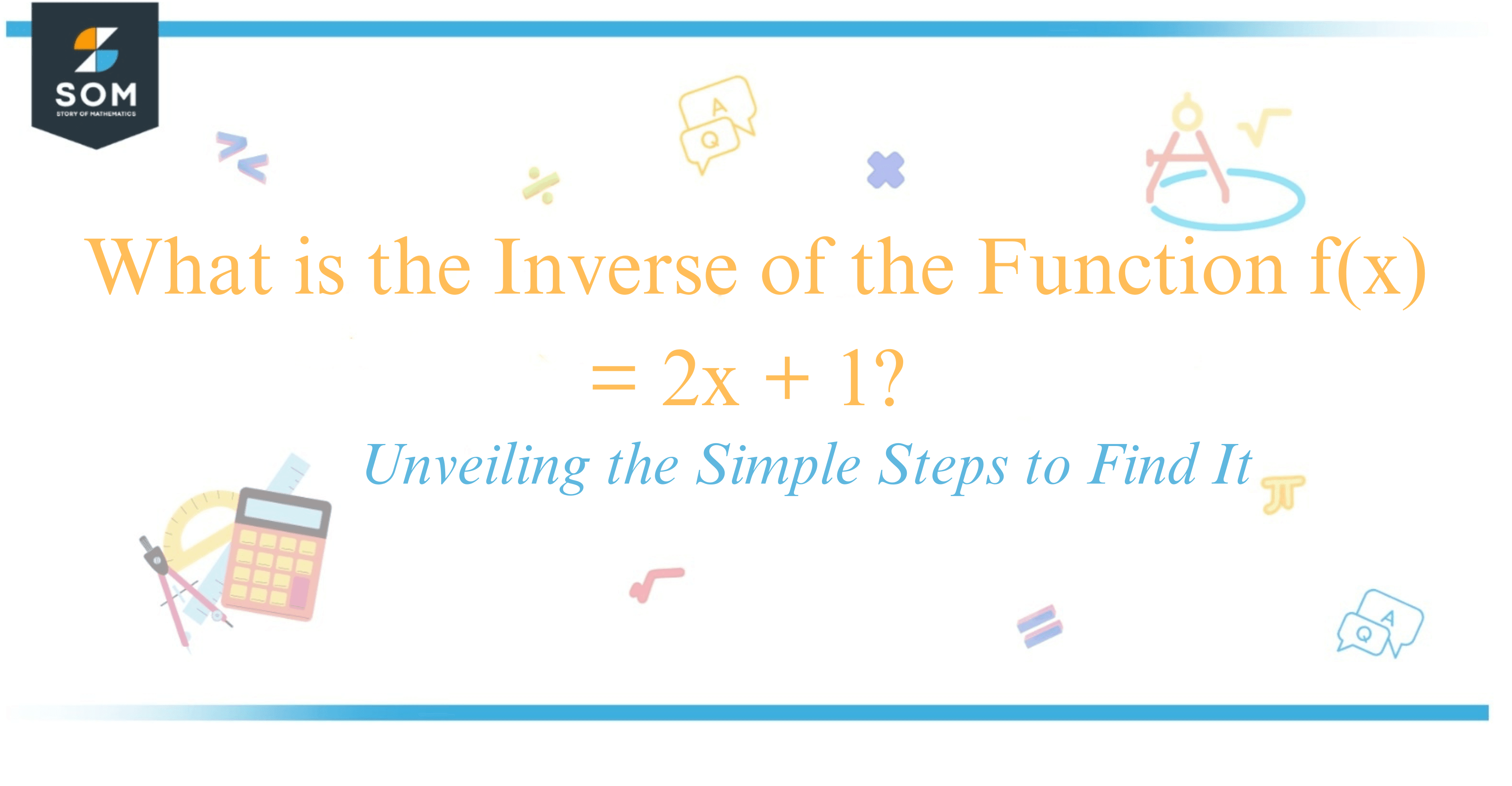
The inverse of a function is essentially a reflection of the original function across the line ( y = x ). If I have a function ( f(x) = 2x + 1 ), to find its inverse, I need to switch the roles of ( x ) and ( y ), and then solve for ( y ).
This process determines a new function, often denoted as $f^{-1}(x) $, that will reverse the effect of the original function. When f(x) and $f^{-1}(x)$ are composed together, the result is the input value ( x ).
In the case of the linear function ( f(x) = 2x + 1 ), finding the inverse involves a few algebraic steps. The first step is to replace ( f(x) ) with ( y ), resulting in the equation ( y = 2x + 1 ). Then, I must interchange ( x ) and ( y ) to get ( x = 2y + 1 ).
The final step is to solve for ( y ), which will give me the formula for the inverse function. Stay tuned to uncover the exact steps and the answer!
Finding the Inverse of f(x) = 2x + 1
To find the inverse function of the linear function ( f(x) = 2x + 1 ), I first consider it as ( y = 2x + 1 ). The goal is to express ( x ) in terms of ( y ), which means I need to solve for y.

Here’s how I do it step by step:
I start with the original equation:
$$ y = 2x + 1$$
I then subtract 1 from both sides to isolate the term with ( x ):
$$ y – 1 = 2x$$
Next, I divide both sides by 2 to solve for ( x ):
$$\frac{y – 1}{2} = x $$
Now, I interchange the variables to invert the function:
( x ) becomes the input, and ( y ) becomes the output. So, the inverse function is:
$$f^{-1}(x) = \frac{x – 1}{2} $$
The domain and range also swap roles in the inverse function. If the domain of the original function was all real numbers, then the range of the inverse is all real numbers, and vice versa.
Here’s a summary in a table for clarity:
| Original Function | Inverse Function |
|---|---|
| ( y = 2x + 1 ) | $ y = \frac{x – 1}{2}$ |
In terms of graphing, the graph of the inverse function is a reflection of the graph of the original function across the line ( y = x ).
Remember, all linear functions are invertible as long as their slope is not zero, which is the case with ( f(x) = 2x + 1 ). So finding the inverse is always possible for such functions, and it involves algebraic manipulation to solve for y.
Applying Inverse Functions
When I encounter a function, such as ( f(x) = 2x + 1 ), finding the inverse function is like asking, “What operation would I need to apply to the output to get the original input?”
To calculate the inverse, I swap the ( x ) and ( y ), and then solve for ( y ). This is my starting point:
I begin by replacing ( f(x) ) with ( y ):
$$ y = 2x + 1$$I then interchange the variables:
$$x = 2y + 1$$Finally, I solve for ( y ) to find the inverse function:
$$ x – 1 = 2y$$
$$ \frac{x – 1}{2} = y $$
So, the inverse function of ( f(x) ) is $ f^{-1}(x) = \frac{x – 1}{2}$.
To provide a practical example, if ( f(3) = 2(3) + 1 = 7 ), then using the inverse function, $ f^{-1}(7) = \frac{7 – 1}{2} = 3 $, which is our original input for ( f(x) ).
If I want to check my work quickly or handle more complicated functions, I might use a function-inverse calculator. These tools automate the process and give me a result without the manual algebra.
| Function ((f(x))) | Inverse Function $(f^{-1}(x))$ |
|---|---|
| (2x + 1) | $\frac{x – 1}{2}$ |
By leveraging inverse functions, I can reverse operations and find original values, an essential concept in many mathematical applications.
Conclusion
In this exploration, I’ve determined the inverse of the function $$ f(x) = 2x + 1 $$. To achieve this, the roles of the input and output were switched.
The process entailed setting $$ y = f(x) $$ and interchanging x and y to solve for y. By reversing the operations of the original function, I arrived at the inverse function $$ f^{-1}(x) = \frac{x – 1}{2} $$.
It’s essential to verify that the function and its inverse truly undo each other’s operations. Applying $$ f^{-1}(x) $$ to $$ f(x) $$, or vice versa, should return the original input value x.
In the context of our function, it means substituting $$ f(x) $$ into the inverse function should get us back to x, confirming its correctness.
Lastly, finding the inverse of a function is not just a mathematical exercise; it has practical implications in various fields like engineering, physics, and economics, where one might need to revert to an original value after a set of operations has been applied.
The integrity of the original function and its inverse is therefore central to their utility in real-world applications.
